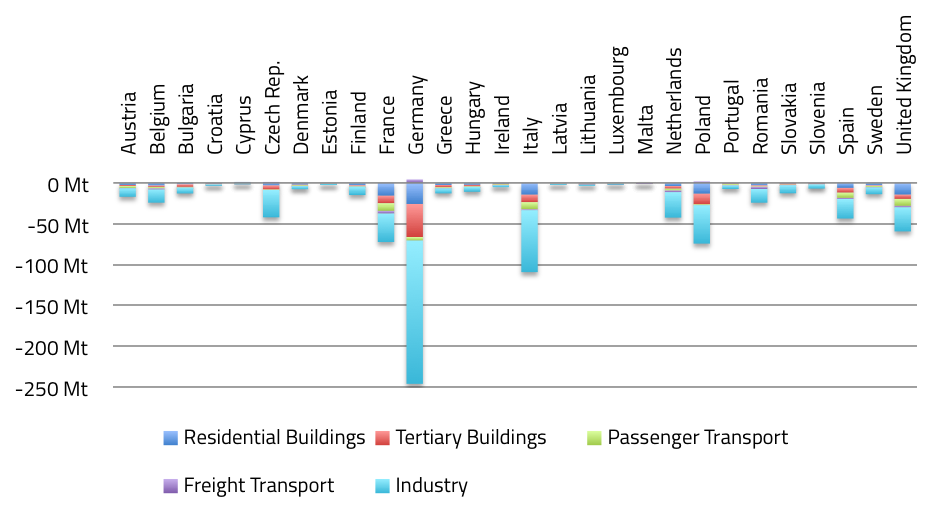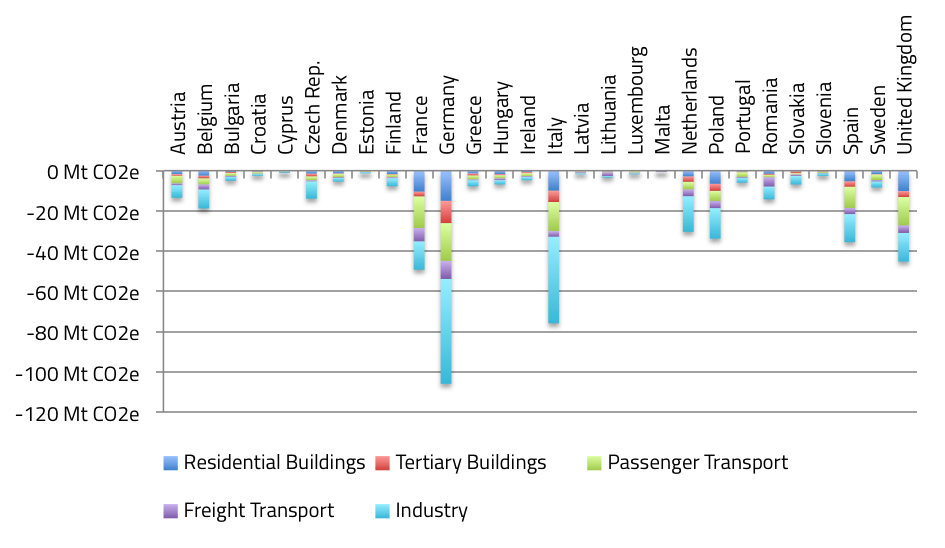Natural resources underpin the functioning of the European and global economy and our quality of life. These resources include raw materials such as fuels, minerals and metals but also food, soil, water, air, biomass and ecosystems (A resource-efficient Europe – Flagship initiative under the Europe 2020 Strategy)
The impact Resources in COMBI focuses on raw materials and their extraction. By implementing energy efficiency improvements (EEI’s) in Europe, any reduction in final energy consumption also reduces the amount of raw materials necessary to provide energy services. However, these reductions are not restricted to Europe alone.
The main impact indicator of Resources in COMBI is called Material Footprint (global raw material reduction). It quantifies the EEI’s savings of abiotic raw materials such as fossil fuels, minerals and metal ores, but also of biotic materials and the extraction of materials without economic use (unused extraction). Additional net savings of greenhouse gas (GHG) emissions are covered by the Carbon Footprint, representing global emission reductions, and the savings of direct GHG emissions from a reduced combustion of fossil fuels in Europe.
The results in the COMBI tool are based on bottom-up models for energy supply (electricity, heat, mechanic energy for transport systems) and to some extent technologies. The Material and Carbon Footprint refer to the accounting of upstream material and energy flows for energy systems (power plants, grids, infrastructures), but also to the production of vehicles and lighting systems. This life-cylce perspective is unique within COMBI and covers all steps from the extraction of materials to the production of the necessary systems for EEI’s (cradle-to-gate).
Gross Material Footprint (tons) of all sectors during use phase (from energy supply)

Implementing all 21 EEI’s helps to reduce the natural resource demand for materials, while also reducing the potential for global warming. In sum, net savings of 868 Mt of materials (Material Footprint), 509 Mt CO2e of global GHG emissions and 362 Mt of direct GHG emissions could be realized with help of these actions. The differences in the production systems (production phase) for vehicles and lighting systems require additional 11.2 Mt of resources (partial use phase compensation), but also lead to additional Carbon Footprint savings of 8.7 Mt (overall savings).
Gross Carbon Footprint (tons CO2e) for all sectors during use phase (from energy supply)
Available outputs from this Work Package
Literature review on resource benefits (D4.1)
Methodology and quantification report for resource impacts (D4.2/D4.4) – available soon
Quantification outputs (D4.3, see COMBI tool) – public launch 17 May 2018
